

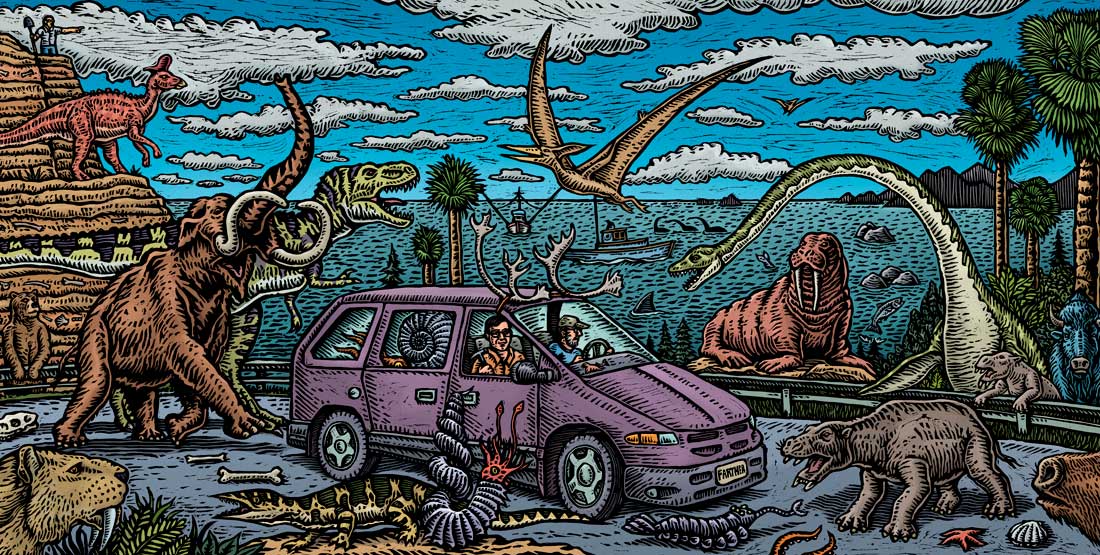
Not yet open at the Burke is Ray Troll’s Cruisin’ the Fossil Coastline exhibition. More about the show in a minute, but meanwhile, I want to give a big hooray to the Paleo Nerd podcast that Ray and his friend David Strassman, a ventriloquest, host. Here is Ray’s own website also.

The podcast is a ton of fun, but also full of a huge amount of information. In fact, I haven’t thought about fossils for awhile – my sister in law lives on the Jurassic Coast in England and works at the local fossil museum, so I have a few ammonites including a stunning necklace.
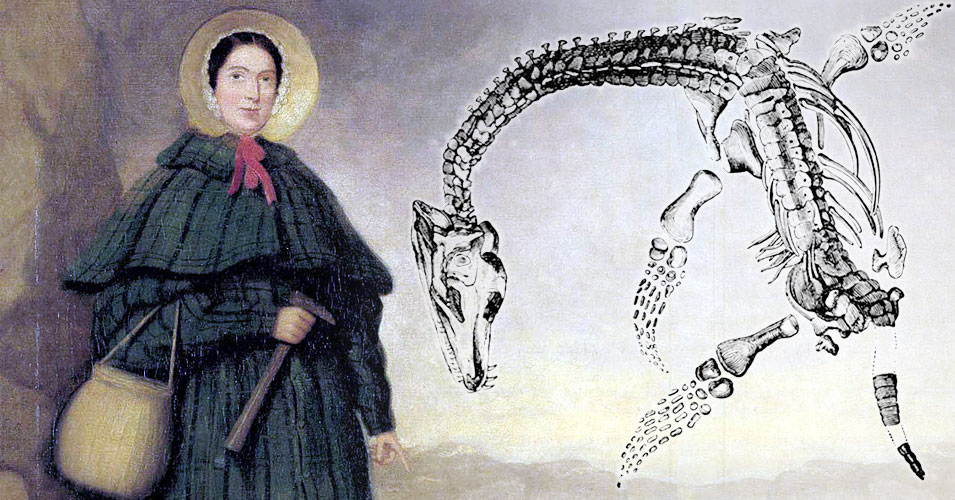
Here is their local celebrity: “Mary Anning (21 May 1799 – 9 March 1847) was an English fossil collector, dealer, and palaeontologist who became known around the world for finds she made in Jurassic marine fossil beds in the cliffs along the English Channel at Lyme Regis ”
So it is a pleasure to think again about fossils.
From the first minutes of this podcast you start to expand your mind, even as you laugh along with them. It is done in a creative way with insertions of weird voices and sounds that interrupt any long windedness that might make our attention wander.
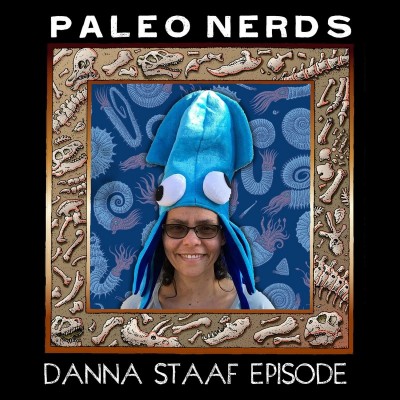
They got my attention when I started listening accidentally at Episode 14, The Flight of the Cephalopods with Danna Staaf
I had no idea that the chambered nautilus was in the same “class” as octopus and squid. Listen to it for more great information!
Then I went back to the first one, which gave some background on how these two became paleo nerds in the first place. What I really like is that they are both incredibly knowledgeable and humble and funny at the same time.
So here is a tidbit to get you started thinking from the first episode. If you want to remember the order of things in the animal kingdom here is a trick from Ray
“King Phillip Can Only Fake Good Sex or
Dumb King Phillip Clearly Only Fears Green Snakes
for
Domain, Kingdom, Phylum, Class, Order, Family, Genus, Species
Paleo Nerds, the podcast talks a lot about geologic time, infinite amounts of time, they stretch our brains and make us realize what a short time we humans have been here in the full scale of time.
As I thought about that, I started re-reading my father’s wonderful 1956 book River of Life. He was a self taught naturalist who wanted to share his wonder at the magic of life, a lot like Ray Troll and his friends want to share the wonder of fossils. The famous artist Bernarda Bryson Shahn illustrated The River of Life. My father focused on how the world has come to look the way it does today ( or as it looked in 1956 when he wrote the book, as much has gone extinct since then)
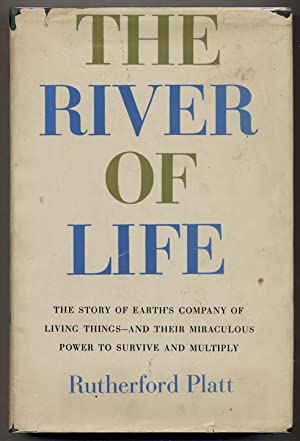
“The story of earth’s company of living things – and their miraculous power to survive and multiply”
He wrote
“life began on earth when a few elements ( principally carbon, oxygen, and hydrogen), cooked by sunlight in warm water gelled to form a peculiar chemical we call protoplasm. ”
“All the teeming world we know is concentrated in a veneer of air, earth, and sea only as thin in proportion to the earth as the coating of wax on the skin of an apple. ”
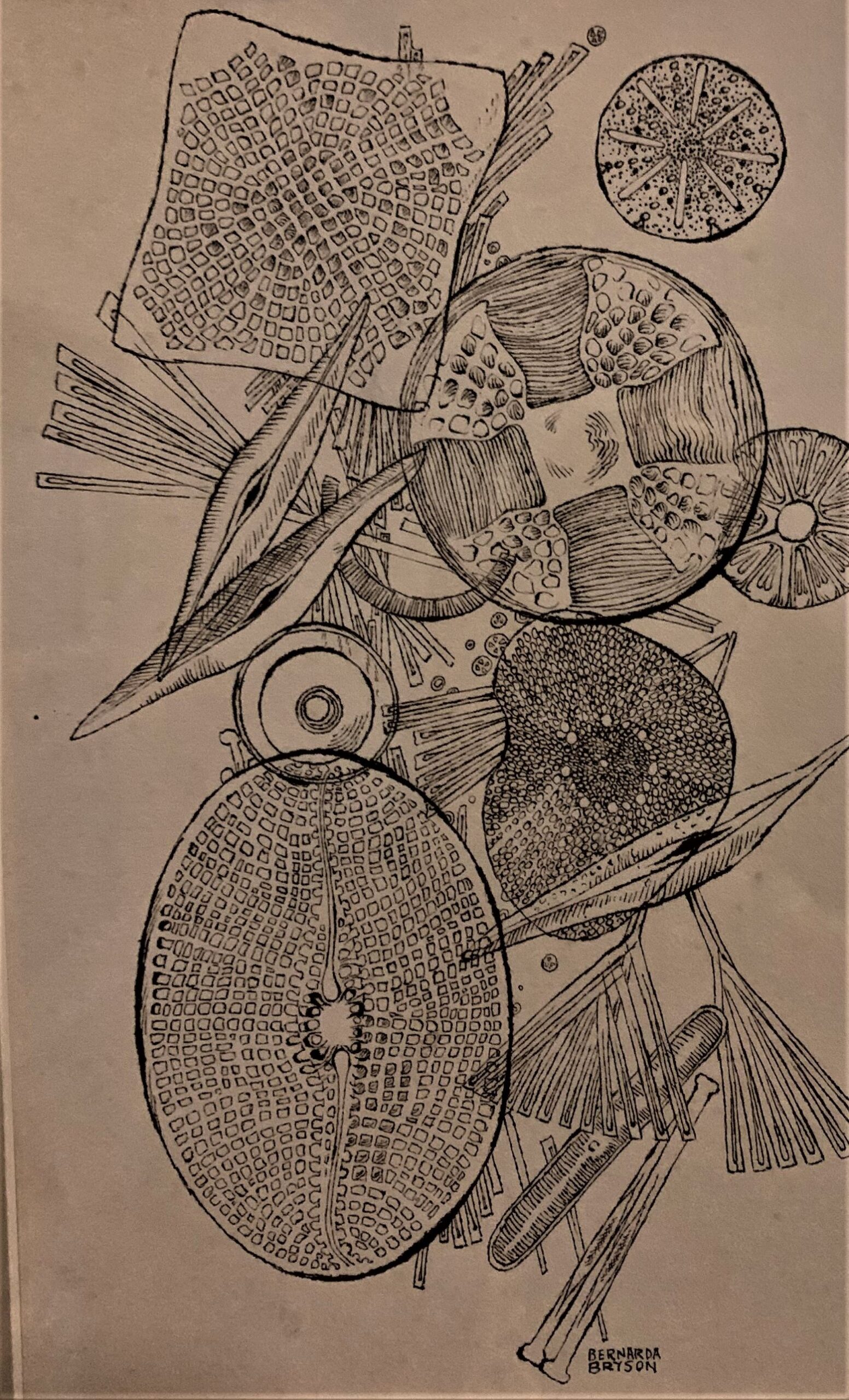
drawing of a diatom by Bernarda Bryson Shahn “ocean plants that make glass boxes, filigreed with geometric designs to live in.”
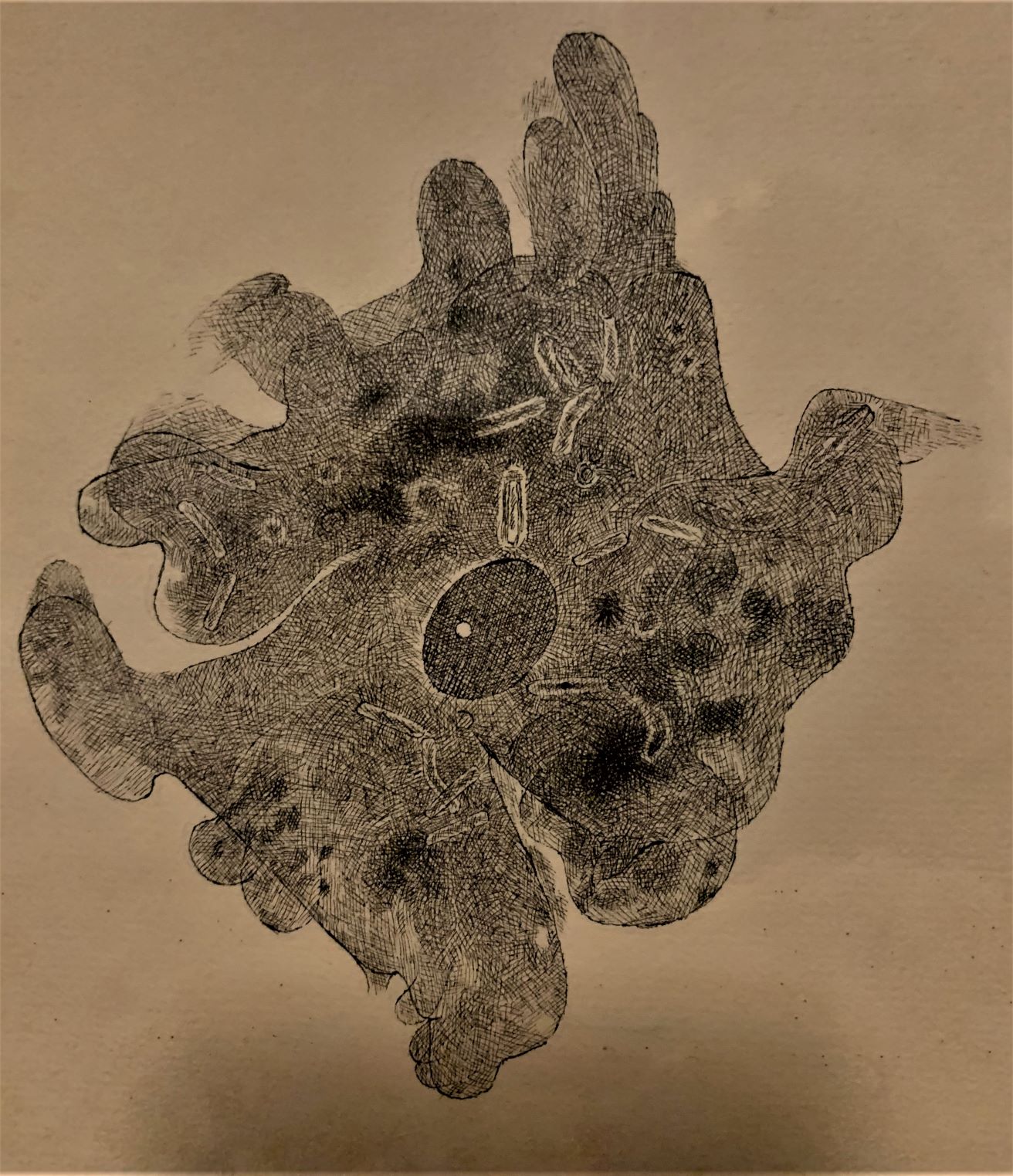
The amoeba by Bernarda Bryson Shahn “an elemental blob that carries on all the basic life activities of higher animals”
Then he celebrates the diversity of life:
“there is perhaps nothing else exactly like earth’s bizarre living cargo in all the universe.. It is unique because it has been shaped, sized, and equipped to fit into the depths of the sea, the heights of the mountains, beaches and jungles, caves and treetops, and all the varieties and soils that exist on earth. These living places have been hammered out in the anvils of endless violence, of winds, and rains, volcanic explosions, fire, glaciers, baking drought, bending rocks, floods of lava and the pushing up and pressing down of land and seas.
We find ourselves in the midst of bees and dytiscuses, earthworms, ants, hummingbirds, kangaroos, cats, dogs, lamelli-corns (scarab beetles), eagles, sea arrows and porpoises, spiders that spin miles of silk out of tiny bodies, rabbits that scare off pursuers by bobbing white cotton balls, blue-behinded apes, elephants- and giraffes that are obviously absurd.
These fellow inhabitants of our earth, living in the same age that we live in and try so hard to own, are our traveling companions on an incredible journey. we all cling to the same ball as we go spinning and rushing through space. … there are so many of us that we are unable even to arrive at final limits for the groups of bacteria, insects, fishes, starfishes, shellfish, reptiles and mammals that suckle their young.
For example no place as ever been found for the animated little powerhouses called viruses.”
I don’t know if this is current science. But we are certainly all thinking about viruses right now! So calling them “animated little powerhouses” certainly works. Take a look at a recent New Yorker article that starts with the single cell amoebus and goes quickly on to how viruses operate
So fossils, in this context, become a record of the mind boggling changes on our planet that predate the planet my father celebrates by millions and millions of years. According to this chart the earth was formed 4.6 billion years ago.
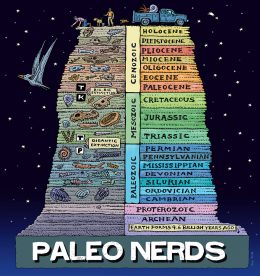
Once you start thinking in geologic time, your day to day life changes to a tiny, irrelevant blip. I find that idea particularly helpful right now. I think we are all living in a moment of existential change on the planet, so looking at geologic time can remind us that everything changes all the time, (but it is certainly changing faster and faster)
So back to the show at the Burke 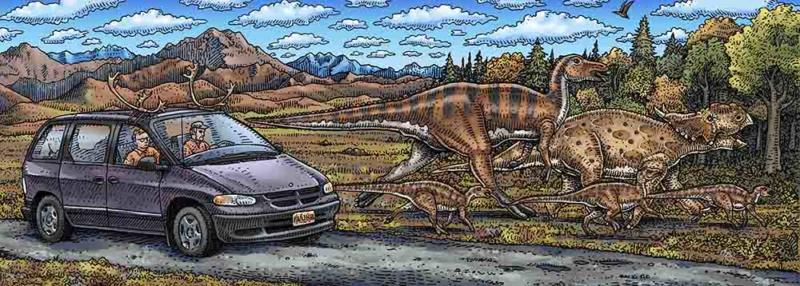
Fossils are a record
of extinct species that have survived in buried layers of sediment and rock.
What the paleo nerds often talk about, is where they went to find fossils, in a formation of particular geologic eras.
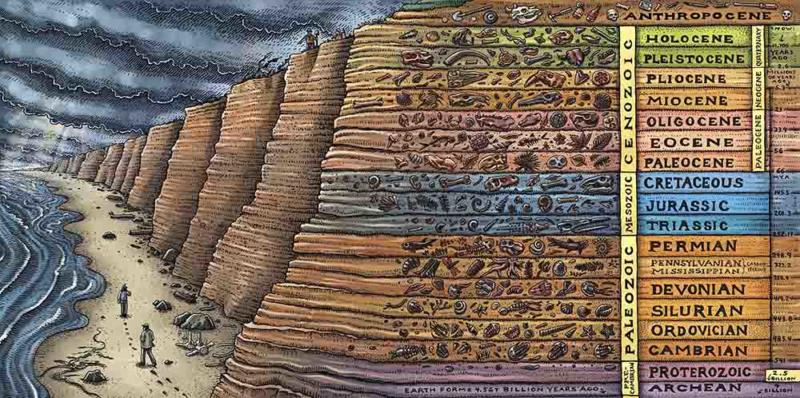
What Ray does is imagine what they looked like.
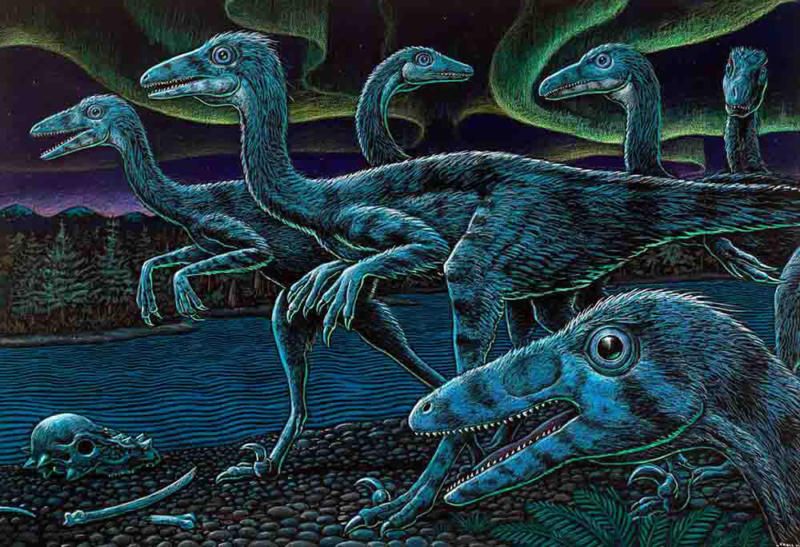
Troodon pack in the Polar Night
Ray Troll has been drawing fossils since he was four years old, based on a plastic dinosaur set his parents gave him. We know that most children go through a “dinosaur phase,” but Ray never came out of it! He says “My mantra in this whole thing — in fact we’ve even written songs about it — is that paleonerds should be proud of the fact that they are grown men who still love dinosaurs.” So by the way he is also a musician.
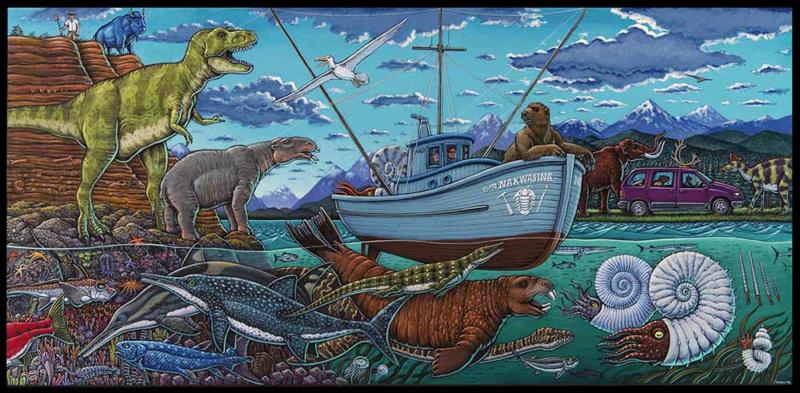
Troll’s detailed paintings and drawings are both scientific and fanciful, they have been called scientific surrealism. They have titles like Suciasaurus-Bloat-and-Float Deep Fried Rhino and Down at the Sockeye Hole One Million Years Ago, ( I believe each refers to how the fossils were deposited, sediment, water, volcano)
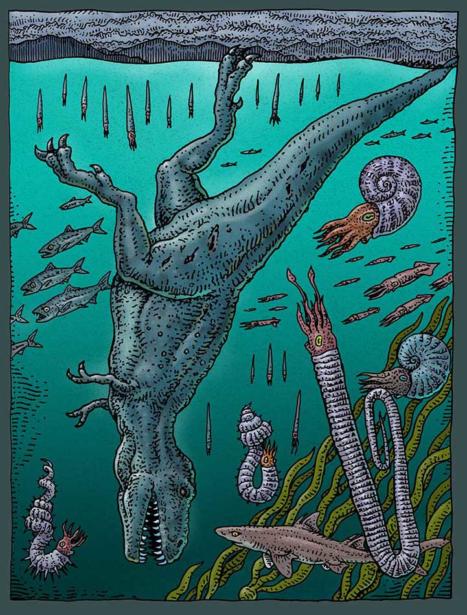
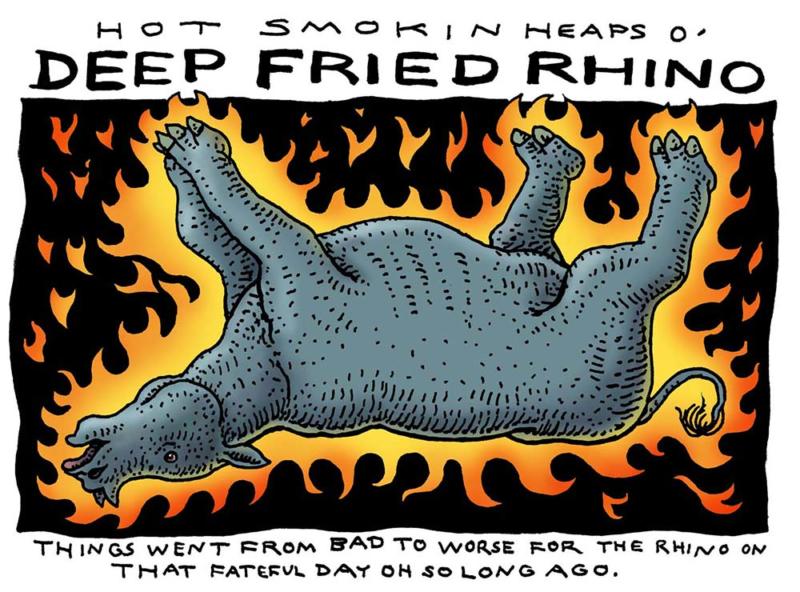
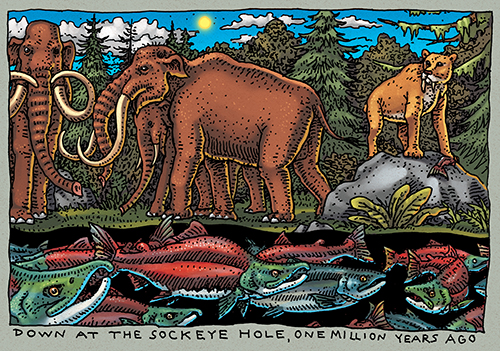
Troll has worked for years with paleontologist Kirk Johnson, now director of the Smithsonian National Museum of Natural History. They drove thousands of miles searching for fossils along the coast of North America. They previously documented the adjacent fourteen states in Cruisin’ the Fossil Freeway.
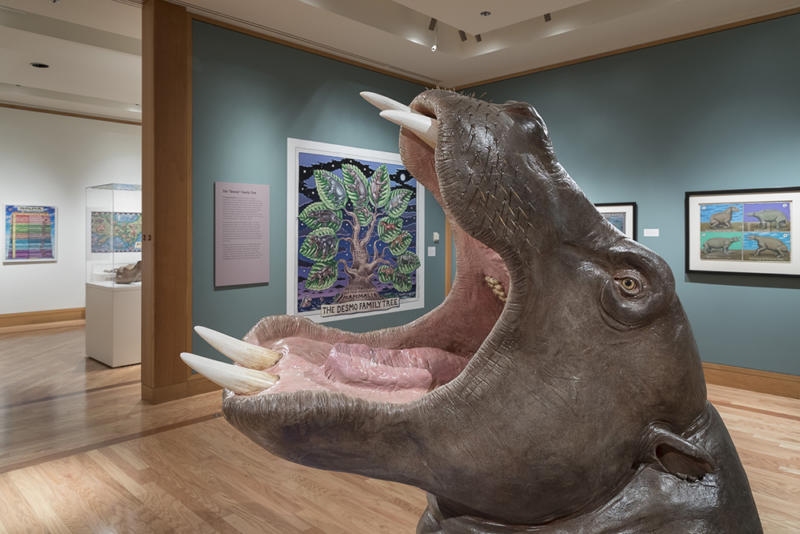
Dary Staab Desmostylian sculpture copyright Jim Kohl Photograph Anchorage Museum
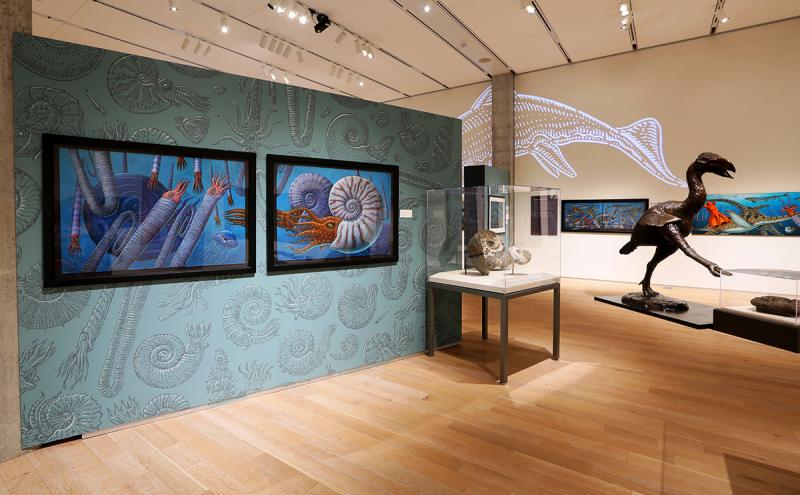
The Alaska State Museum installation in Juneau Photo by Brian Wallace
The exhibition ( these photos are from a previous venue) includes many of Ray’s detailed paintings, as well as life size models of dinosaurs, and a light and audio installation. There are mammouth teeth found near Seattle. and a cast of the lower jaw of the Blue Lake Rhino, an Ice Age rhino found in Coulee City Washington. Fossils of flowers, plants, and whales come from the Burke’s own collection and finally we will see “Suciasaurus rex”—Washington’s first and only dinosaur fossil.
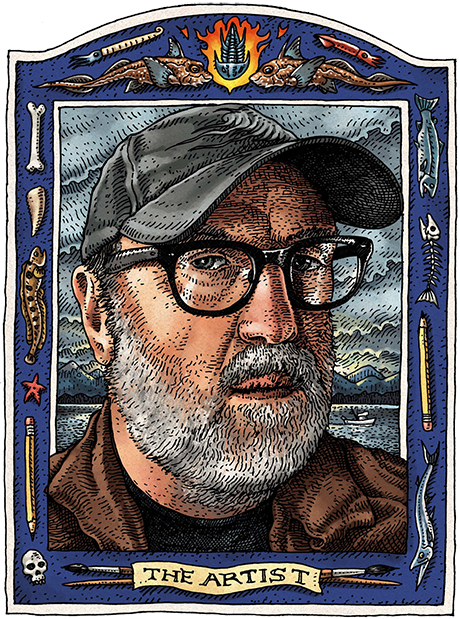
Troll never seems to take himself too seriously, but he in partnership with Kirk Johnson in this exhibition, achieves something impressive: interesting everyone in science and art at the same time.
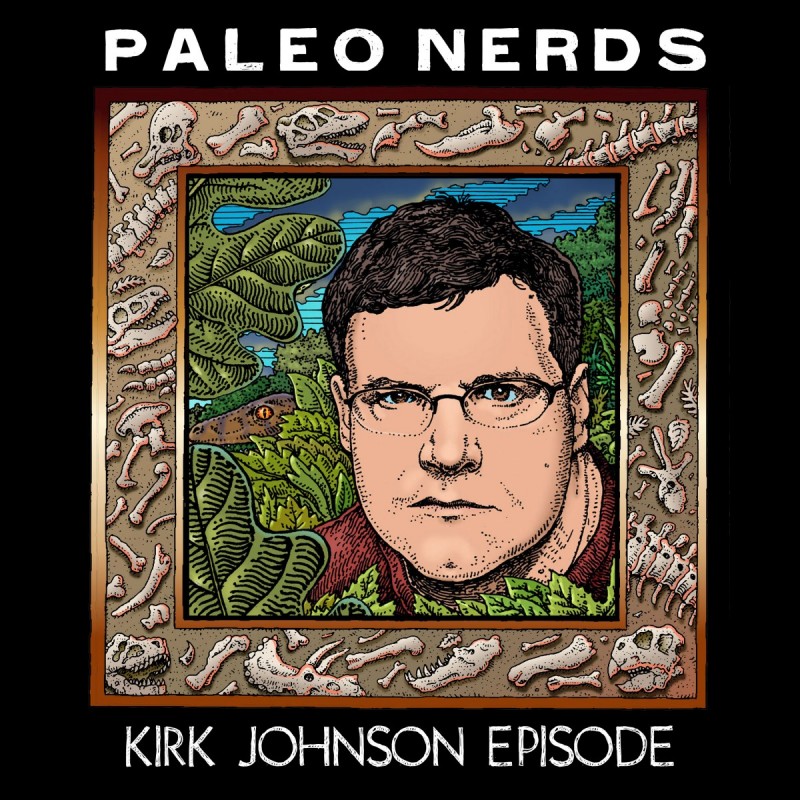
One more note on the theme of getting people to believe in science, a huge problem at this moment.
At the end of no 2 with Kirk Johnson that covers a lot of ground about all sorts of topics including the meteor that wiped out the dinosaurs, Kirk is asked why people don’t believe in facts and science. He answers that it is not just science’s failure to communicate in a way people can understand, it is also tribalism, people belonging to a group that doesn’t believe and that is much harder to penetrate. He made a movie called Polar Extremes to move the conversation forward.
On the other hand, he himself has his roots in a fundamentalist religion, Seventh Day Adventism! How could he become a world famous paleontologist Ray asked him. The answer was fascinating:
his church didn’t believe in evolution but they talked about it all the time! So as a child the word and concept became more familiar to him than his friends, none of whom had any contact with the idea since it wasn’t taught in schools.
Paleo Nerds is perfect for listening in the early morning if you wake up to early. I am learning huge amounts and all the visitors are brilliant and entertaining.